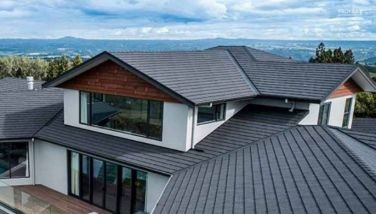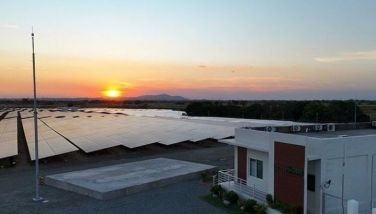Land-grabbed shorelines

Why is it that most of the public beaches or shorelines in the Philippines, particularly along popular tourist destinations, are no longer accessible to ordinary Filipinos? Some are either “privately owned” by a person or family or claim to be part of a resort or hotel.
You cannot directly go to the beach or shoreline without passing through a hotel or resort establishment and, in order to do so, you are charged anywhere from P150 per person, and you are not allowed to bring any food or drinks or beach accessories, forcing you to patronize the said establishment.
What about the ordinary low-income people or children in the community who were displaced by the property developers and cannot pay the said entrance fee? This is the reality all over southern Luzon, particularly in the provinces of Batangas and Cavite, as well as in some areas in the north.
Adding insult to injury, security guards and employees of these hotels and resorts actually drive away people by the beach or on the water in front of their establishments, claiming the area is part of their property. The situation has now caught the attention and ire of regular Filipinos who are being harassed and prevented access to public areas.
This was a similar concern on the island of Boracay during the Duterte administration. After president Duterte issued the order to clean up the island, the DENR secretary Roy Cimatu immediately implemented strict zoning rules.
The Department of Tourism under secretary Berna Romulo and her team held numerous town hall meetings to see to it that the beach front and shoreline were cleared of obstruction, while the PNP on the island back then strictly enforced safety, peace and order policies.
This proved that “where there is a will, there is a way” and that order could be restored if leaders did their job. Unfortunately, things have become very lax under PBBM, with many resorts and hotels making up their own rules and claiming public property as their own.
Even barangays in many areas have gone into the business of collecting “environmental fees” or “entrance fees” by putting bamboo barriers to block vehicles going to beaches and resorts. By the way, they don’t issue receipts, so who keeps the collection?
Aside from cleaning up Boracay and returning sanity to the island, the Duterte government made sure that access to the beaches and shoreline was guaranteed by establishing right-of-way lanes and tunnels between or beside buildings.
I won’t hold my breath hoping that the current DOT and DENR secretaries will jump up and do something about these problems, but maybe DILG Secretary Jonvic Remulla can disengage himself from the Duterte controversy and attend to the right-of-way issue concerning beaches and shorelines.
The matter is not limited to beach lovers and tourists but also seriously affects backyard fisherfolk and banca owners whose sources of income have been obliterated by resorts and hotels who won’t allow bancas to “park” on the beach or take tourists on island hopping or fishing trips.
Every barangay, town or municipality should be required by the DILG to secure passageways or access to beaches and shoreline. In fact, the DILG should also look into vehicle access and parking for barangays that encourage tourism.
During recent trips around Batangas and Zambales, we observed that the private sector has heavily invested in tourism development, but the local and national governments have been left behind as far as roads and bridges are concerned.
In Lobo, Batangas, many families built beautiful resorts, but the access road was nothing more than a strip full of rocks and crushed corals they call a road. There was some effort at getting paved roads, but the funds were realigned or redirected so whenever it rains, resort visitors can’t come.
In Zambales, what we noticed was the lack of planning as far as access roads were concerned. The drive across Zambales was great but the minute you got off the highway, you immediately get into narrow streets, indicating that infrastructure planning and development was an afterthought.
Given that the DPWH has the biggest cut of the budget and given that congressmen have the say on where the money is spent, can we ask them to please address these various problems: right-of-way or access to public spaces and decent roadways for tourism development.
Before I forget, something that congressmen, the DOT, DILG, DICT and DOF should pool their efforts, influence and resources into is to prioritize the construction of cell sites in places like Tanay, Rizal or the Batangas, Zambales, Mindoro, Palawan and Bohol coastline, where tourism is being hampered by lack of mobile and internet connection.
The aforementioned departments of government have to pool their resources and pay for cell sites or towers in those areas because the telcos won’t do it unless there is an established market or a big enough population to make money on. Pooled resources mean less cost per department.
Once connectivity is established, more and more people will be able to make direct inquiries, bookings and visits to such places, supply chain management will be easier, peace and order monitoring and response will be faster and travelers will feel safer all around. Now let’s see who has the humility and initiative to do what’s right for many Filipinos.
- Latest
- Trending
























